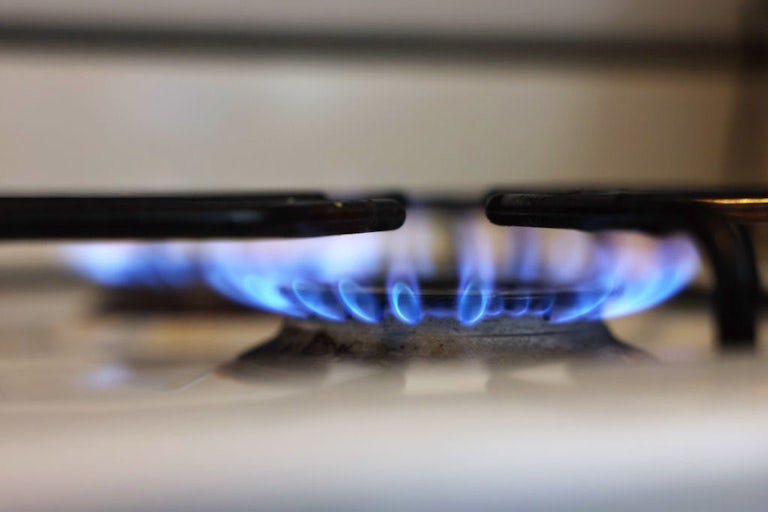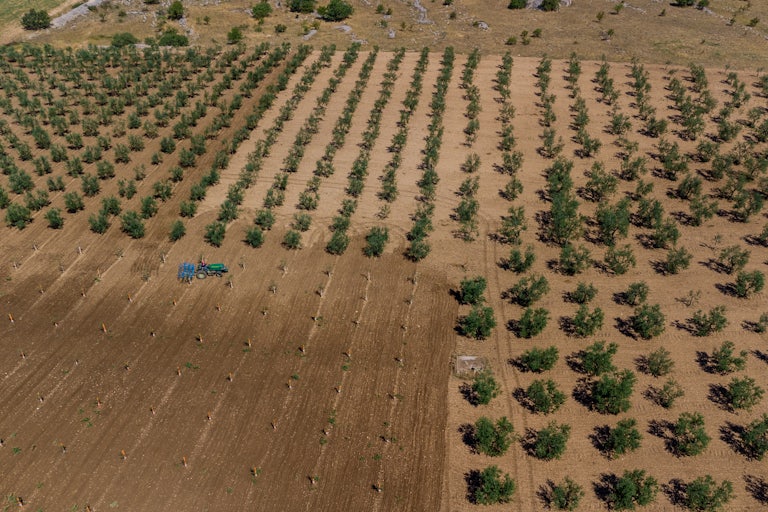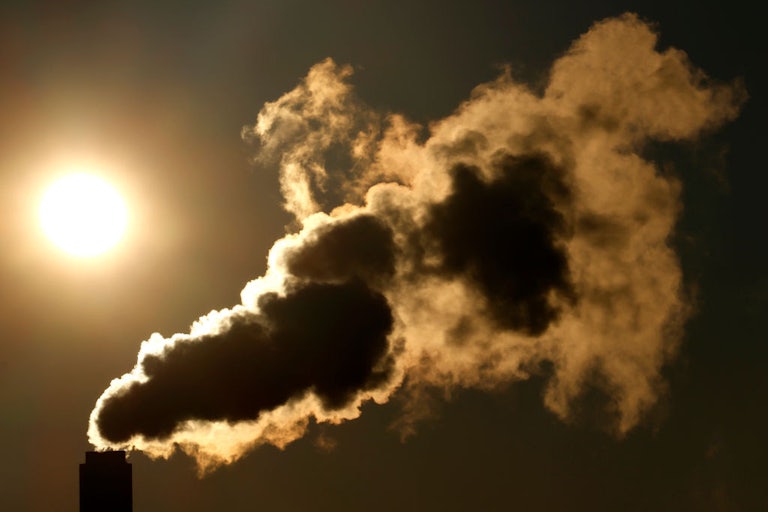The Really Grim Part About Gas Stoves
Lower-income people living in smaller spaces are especially affected by the toxic gases these ranges leak.

Industry marketing campaigns have long conditioned Americans to believe that gas stoves are the height of bourgeois suburban sophistication and the discerning choice of the home chef—Anthony Bourdain meets Instagram trad wife, if you will. What they don’t tell us is that gas stoves poison us—particularly the poorer among us.
Researchers have known for a long time that the nitrogen dioxide released by gas stoves contributes to childhood asthma and other respiratory ailments, and have recently been examining the risk from benzene as well. But a new study clarifies that this is especially bad for people living in smaller spaces. Those in residences under 800 square feet, the researchers found, experience over four times the long-term nitrogen dioxide exposure from gas stoves that those in residences of over 3,000 square feet do. This also means, researchers note, that largely due to differences in average residence size, American Indian and Alaska Native households, Latino households, and Black households with gas stoves tend to have higher than average levels of nitrogen dioxide exposure.
This shouldn’t come as a surprise. Research on the dangers of gas stoves goes back to the 1980s. And as TNR columnist Liza Featherstone argued last year, pro-gas politicians’ insistence on portraying these stoves as a consumer choice issue has always been a red herring. Many people can’t afford to replace their gas stoves. Often, it’s not even up to them: They’re renting. In a pilot study that replaced public housing residents’ gas stoves with induction ones, Liza wrote, “households using induction stoves had a 35 percent reduction in daily nitrogen dioxide compared to … households using gas stoves, and the decrease in carbon monoxide was even more dramatic. The participants, several of whom suffered from asthma, noted that since the departure of their gas stoves, their symptoms had disappeared.” And not a single person asked for their gas stove back.
This was not a double-blind randomized controlled trial. But then again, neither are the paeans to gas ranges that the industry has flooded us with for the past hundred years. While over a century of industry marketing in this country has sought to portray gas stoves as a domestic status symbol and the ultimate chef’s tool, many professional chefs now admit that induction is just as good, and maybe better: faster, safer (less opportunity for sleeves to catch fire, totally apart from the asthma and cancer thing), and a pleasanter cooking experience, because it keeps the kitchen cooler.
As investigative outlet DeSmog reported this week, a social media campaign from the nonprofit Gas Leaks Project is now seeking to counter industry messaging, spreading awareness about the substances gas stoves leak even when not in use, and pointing people to “a petition urging the U.S. Consumer Product Safety Commission to put health warning labels on all gas stoves.” California and Illinois are already considering legislation requiring a warning label on the appliances.
Even if these policies get enacted, they probably won’t be very effective. When I asked John Banzhaf, a law professor famous for his work against cigarette companies, about legal and policy approaches to the dangers posed by gas stoves back in 2022, he noted that package warnings are one of the less useful options, “because by the time you’ve bought it you’re not going to send it back ’cause you saw this little note.” Requiring a notice on all “advertising and promotion” would be better— it’s “what we do with smoking,” he added. But it tends to get challenged in court on First Amendment grounds. Labeling also won’t help with the issue of people being unable to replace their stoves. (As I wrote last year, getting a landlord to replace a gas range is hard.)
Then again, it’s better than nothing. As House Republicans consider a slate of bills this week to keep Americans’ energy bills high in the name of consumer choice—the “Hands Off Our Home Appliances,” or “HOOHA,” Act—it may be worth reminding people that this is not actually a political game. It’s an urgent public health problem. Countless Americans are being poisoned every day by their stoves. The only question is whether we’re going to do anything about it.
Good News/Bad News
![]()
Inside Climate News has a fascinating report on one of a few possible technologies for long-term energy storage—a crucial complement to wind and solar. This one involves compressed air.
![]()
Stat of the Week
251%
That’s the potential increase in habitat for the West African gaboon viper, according to a new study about how climate change will shift the geography of venomous snakes, reported by The Guardian. That means, the researchers note, that historical habitat may not be the best guide for figuring out which establishments should stock various antivenoms.
What I’m Reading
An orangutan in Sumatra has been observed chewing up medicinal leaves and putting them on his facial wound—further evidence that humans are not the only species to self-medicate:
“Once I heard about it, I got extremely excited,” said Isabelle Laumer, a primatologist with the Max Planck Institute of Animal Behavior in Germany, in part because records of animals medicating themselves are rare—even more so when it comes to treating injuries. She and colleagues detailed the discovery in a study published Thursday in the journal Scientific Reports.
The plant Rakus used, known as akar kuning or yellow root, is also used by people throughout Southeast Asia to treat malaria, diabetes and other conditions. Research shows it has anti-inflammatory and antibacterial properties.
Read Douglas Main’s report at The New York Times.
This article first appeared in Life in a Warming World, a weekly TNR newsletter authored by deputy editor Heather Souvaine Horn. Sign up here.









